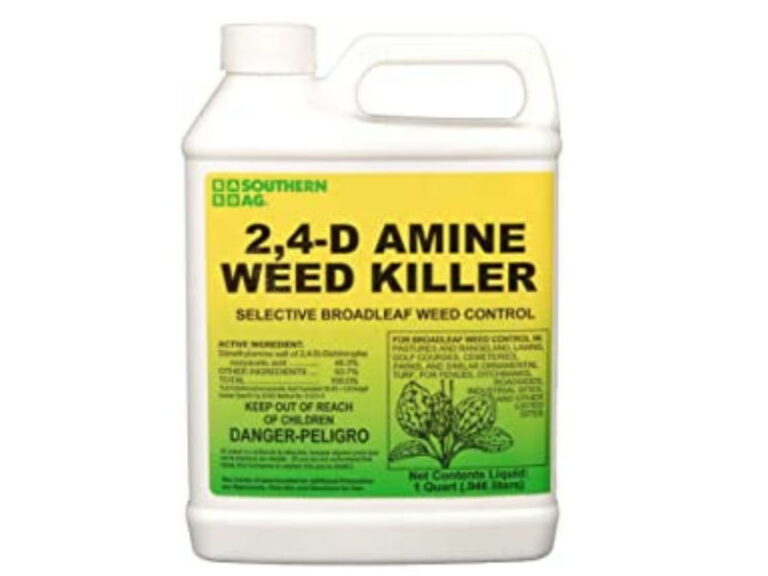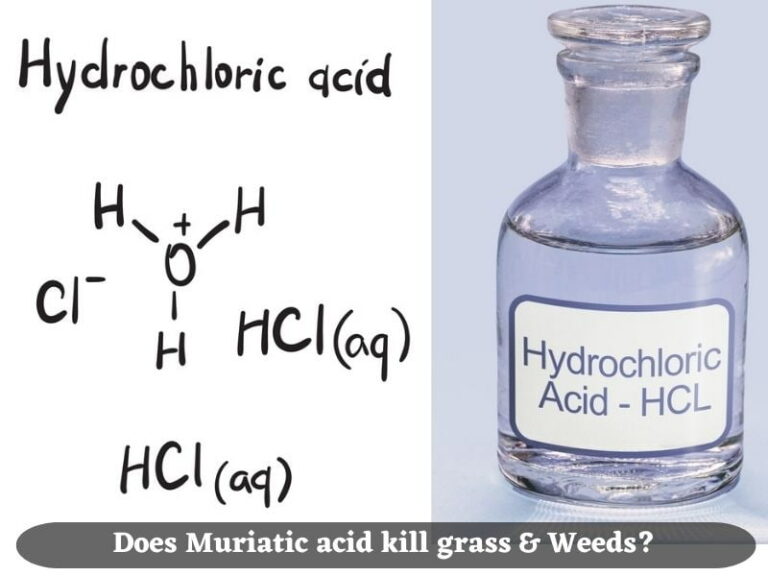Will Weed and Feed Kill Grass Seed? When to Plant and Spray
Many gardeners often find themselves unsure of how long they’re supposed to wait until they can apply weed and feed to their lawns after planting grass seed. Conversely, the issue may be how long one’s supposed to wait to plant grass seed after spraying weed and feed. For both concerns, the answer largely revolves around the type of herbicides found in different weed and feed products.
Can you put weed and feed on grass seed?
You may be having an irresistible urge to spray weed and feed on your recently overseeded turf after spotting one or two weeds sprouting on the lawn. However, the growing seedlings will not be able to survive the strength of the herbicide. If you’re planning to use a weed and feed product with a post-emergent herbicide on your growing turf, wait until the grass roots anchor deeper into the soil and the lawn is established.
Also, some weed and feed products are non-selective, pre-emergent herbicides targeted at preventing weed seeds from sprouting. As such, when they’re applied on a recently seeded lawn even before the grass seeds germinate, they’ll kill the weed seeds as well as the grass seeds.
To control weeds on lawns before the new grass is established, consider alternative measures like spot treatments. You can also manually uproot the weed plants if the infestation is still in the early stages.
Mowing also helps to control weed growth in newly-established lawns, as the grass grows stronger and crowds out more weeds. In fact, it’s advisable to refrain from spraying weed and feed on your new turf until after the third mowing. By then, the grass will be strong enough to withstand herbicides.
However, even then, you should only use a post-emergent, selective weed and feed product. These will easily kill broadleaf weeds like dandelions and clover without harming your turfgrass. Pre-emergent herbicides won’t work on already existing weed plants, while non-selective/systemic herbicides will kill both the weeds and your growing turfgrass.
When to plant grass seed after weed and feed?
The best time to plant grass seed after applying weed and feed depends on whether the weed and feed used contained a pre-emergent or post-emergent herbicide. For weed and feed products containing post-emergent, systemic weed killers, you can plant grass seed as soon as two weeks after application.
That’s because systemic herbicides don’t leave any residue in the soil that might harm seeds grown a few days after. They’re instead absorbed into plants via the leaves and roots, killing the whole plant within 7 days. Common examples of systemic herbicides include glyphosate and pelargonic acid.
Pre-emergent herbicides, on the other hand, are formulated to inhibit seed germination by forming a chemical barricade atop the soil. Thus, if you plant your grass seed soon after applying a weed and feed with a pre-emergent herbicide, they won’t sprout as the herbicide will still be in the soil.
To seed your lawn after using a pre-emergent weed and feed, you may have to wait between 1-6 months, with 2 months being the average wait time. This is due to the wide variation in the duration it takes for different types of pre-emergent herbicides to degrade in the soil. A herbicide like 2,4-D decays in as soon as four weeks, but you may have to wait for six months to plant grass seed on a lawn treated with Atrazine herbicide.
Take note, though, that there are some types of weed and feed products that can be used to suppress weed seeds without affecting grass seed. These products usually contain siduron, a pre-emergent herbicide that also boosts germination of grass seed. If your pre-emergent weed and feed contains siduron as the primary active ingredient, you can sow grass seed right after application.
Note: Always read the labelling on your weed and feed for information on how long you should wait to plant grass seed post-application. The types of herbicides infused into the product usually determines the manufacturers’ wait time recommendations.
How long after seeding can you spray for weeds?
It’s not uncommon to find weeds sprouting and growing on your lawn alongside your new grass seedlings. The right time to spray selective weed and feed on your lawn after seeding is after mowing three times. At this stage, the grass is mature enough to withstand the harsh chemical herbicides inside the weed and feed.
You can also spray a pre-emergent weed killer if the weed infestation is still in the earlier stages. When you start to notice weeds on your new turf, it’s a sign that more weed seeds are present in the ground and are about to germinate.
You should spray a pre-emergent at least 14 days after seeding, after the grass seeds have germinated into seedlings. As such, you’ll be targeting only the weed seeds that haven’t yet sprouted, and not your grass seeds.
Note: Never use a non-selective weed killer on your new lawn, no matter how mature the grass looks, as it will kill all plants it comes into contact with including the grass.
Weed Control Tips after Seeding a Lawn
You can keep weeds out of your lawn after seeding by adopting the proper watering, fertilizing, and mowing practices. Doing so helps your turf grow stronger and stay healthy enough to choke out weeds.
- Watering– proper watering encourages deeper rooting, helping the turf grow denser and choke out weeds. You should water your newly planted lawn lightly and frequently after seeding. Once the turf has established, usually after 2 weeks, you can then reduce the irrigation frequency but water the grass for longer during each session.
- Fertilizing– fertilizing at the right time helps new turf become well-established and sturdy, thus more resistant to weeds. The best time to start fertilizing a new lawn is 6-8 weeks after planting. You don’t want to start fertilizing too soon, as the fertilizer may burn your young seedlings.
- Mowing- mowing at the proper height and the right time also encourages denser growth and quicker turf recovery. Generally, you should cut at most one-third of the total length of your grass leaf blades. This will allow the grass to enjoy the benefits of mowing, while still retaining enough grass blade surface area to for sufficient photosynthesis.
References
- Paul A. Baumann, Peter A. Dotray and Eric P. Prostko, Texas A&M Agrilife Extension: Herbicides: How They Work and the Symptoms They Cause
- University of Georgia Extension: Weed Control in Home Lawns




Is there a weed/feed product that’s child and pet safe? One that is safe and REALLY works?
Thanks, Steve Andrus